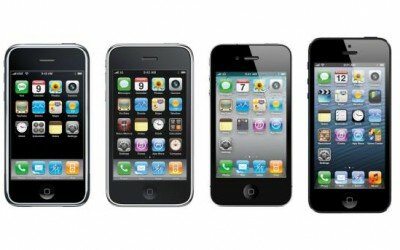Is A Cheaper iPhone Necessary?

There are many rumors about Apple building a low cost iPhone. But we ask ourselves, is a low cost iPhone really necessary? Apple is already doing a good job when it comes to appealing to the low budget market, with previous generations of iPhone. Older iPhone models sell for less, making them an attractive option as a low budget iPhone. The iPhone 4S for example sells for one hundred dollars less than an iPhone 5, or for half the price if you opt for a two year contract. The iPhone 4 is another attractive option, as it is a very cheap iPhone model.
This strategy works great for Apple and has two major advantages. One, it is a good way of selling surplus units in the inventory. Two, it is also a very good way of attracting people that are part of the low budget market to the iOS ecosystem without investing in the development of a product for them. On the consumer side, this means that they buy one year old (or even two years old) smartphones, which in the industry amounts to a huge amount of time. Yet, these older iPhone models still sell and they sell a lot of units; this basically means that there is a low budget market for the iPhone line and that Apple is already exploiting it.
And this low budget market is thriving as demand is so high that it affects the average price of the iPhone line. According to Apple, the average price of the iPhone line of smartphones saw a drop of $28 in Q1 of 2013, as a result of iPhone 4S and iPhone 4 selling lots of units. These cheaper iPhone smartphones sold so much (especially compared to the newer and more pricey iPhone 5) that they dropped the average selling price of the iPhone.
As we said, there have been many rumors around the subject of a cheaper iPhone. And as the low budget market continues to grow, it is important for Apple to have a very active presence on it. But the question is: if Apple already has an active presence in the low budget market thanks to its older iPhone models why should they make a low end iPhone specifically for the low budget market? Well, the answer is that such a ‘specifically designed for low budget markets’ iPhone would most probably be aimed at markets that are not as matured as the US market. Instead, it will most likely be aimed at emergent markets such as India and China; let us not forget than China and India have over 2 billion people. Another market with a lot of potential (in the millions of possible customers) is Africa. And there are many other markets that Apple (but also Samsung) could exploit.
In some of the above mentioned markets, selling a high end smartphone is not an easy task, as the average consumer can barely buy daily necessities. Add the fact that carriers from these markets do not offer considerable smartphone subsidies. What this means is that if you are in India and you want to buy a new iPhone 4S, you could spend over five hundred dollars for it; on the other hand, if you are in the US, for the same smartphone you will only have to pay one hundred dollars with a two year contract.
Even so, the iPhone is in high demand in these emergent markets and for this reason second hand iPhone’s resale prices are very high. A common practice is to trade older models of iPhone on sites like Nextworth and Gazelle and sell them in emergent markets where their value is very high. These emergent markets might welcome a low cost iPhone with open arms. Such a low cost iPhone couls be sold for let’s say 99 dollars (maybe even less), without any subsidies from carriers. Of course, the average consumer (the one that we mention that can barely buy their daily necessities) would most likely still not be able to afford a low cost iPhone, even at this low price. However, people from the middle class (a middle class that is in continue expansion in these emergent markets) would be able to afford it and they would would be the target audience for a low cost iPhone.
We suspect that in the case of a cheaper iPhone, Apple would probably release it only in these emergent markets; as such, they would probably opt not to release it in the US or any other mature markets like it. A similar example can be found if looking at Nokia; their Nokia Asha line of smartphones consists of low to mid end smartphones aimed at people who aren’t willing to spend a lot of money on a smartphone but still want all the basic features. The Asha line is only available in these emergent markets. And even though the smartphones from the Asha line are not as feature rich nor very impressive hardware wise, they are still functional smartphones and it is likely that a segment of US customers might still be interested in them. Yet, Nokia decided not to offer the Asha line to the US market and Apple might adopt a similar position when selling a low cost iPhone.
In case Apple will decide to produce a cheaper iPhone, we believe that they will adopt a business model similar to what we suggested in the previous paragraph: they will probably only make it available in emergent markets such as China, India and Africa and at the same time they will continue to sell older iPhone models (such as the iPhone 4 and the iPhone 4S) for less than newer models. the conclusion is that you shouldn’t expect to buy a possible low cost iPhone for 99 dollars from Verizon or AT&T; instead you will probably only find it available in emergent markets like China and India.










